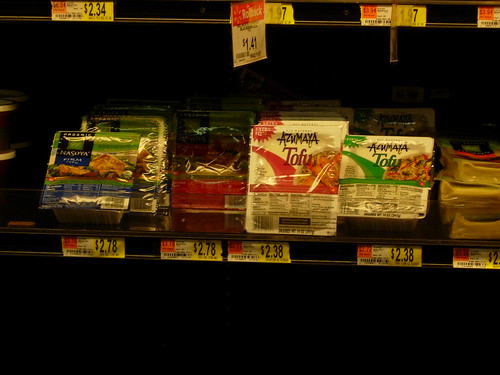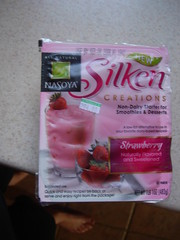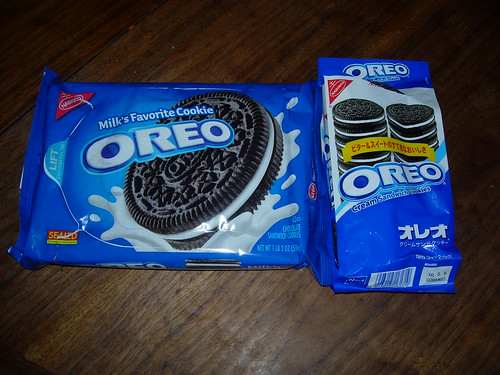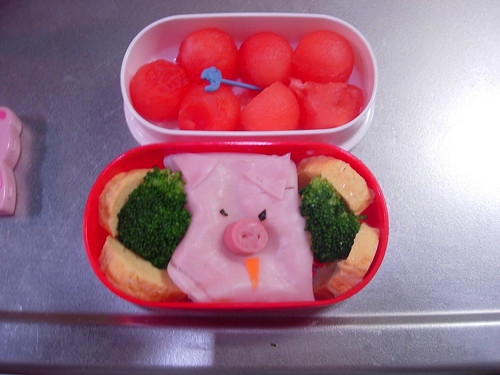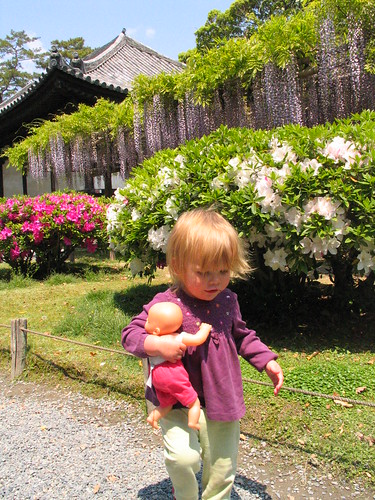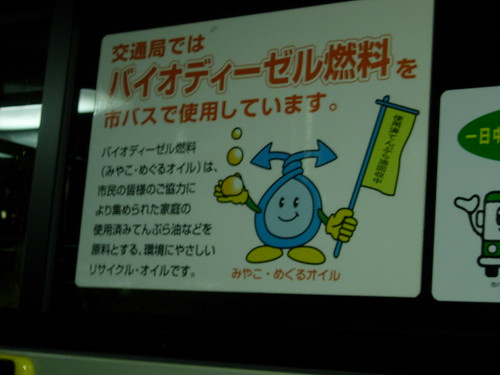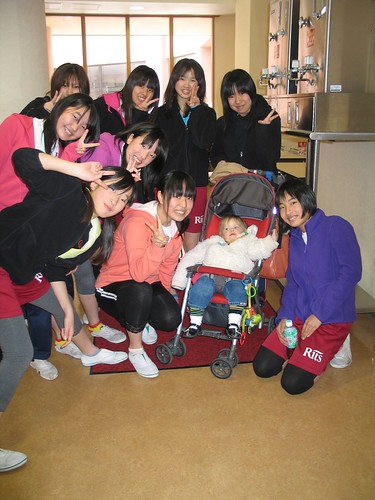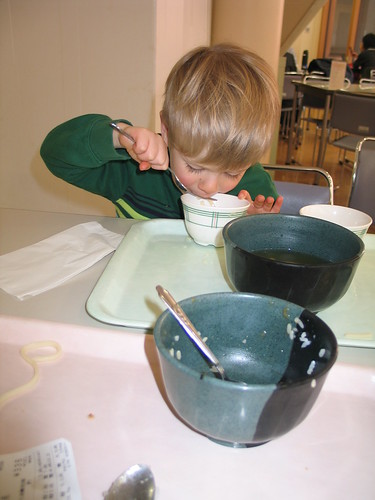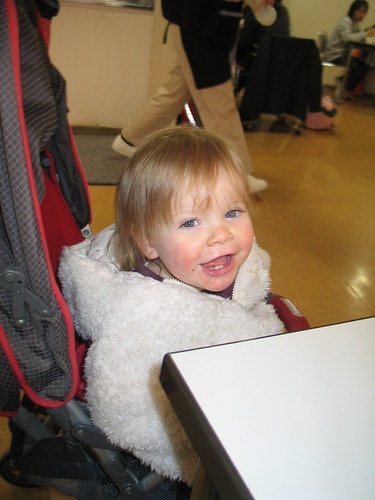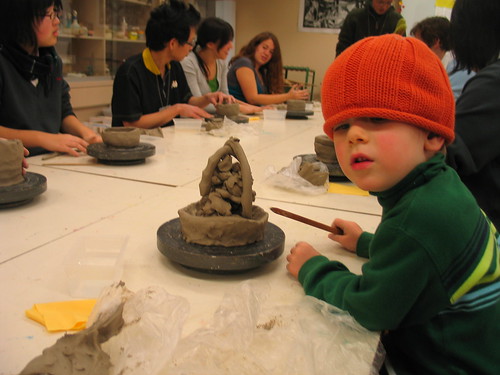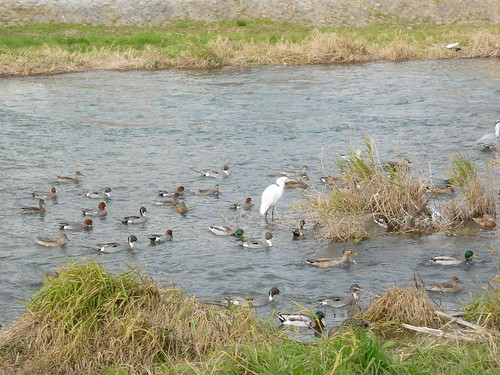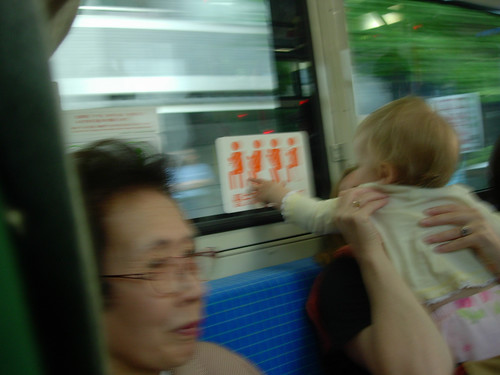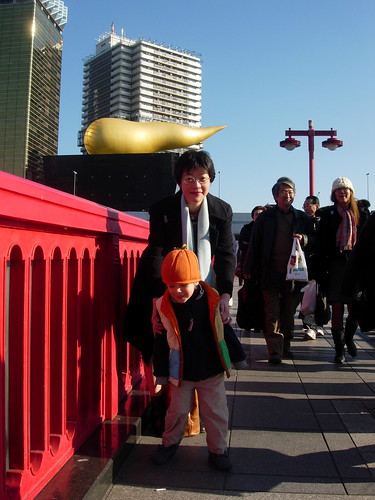
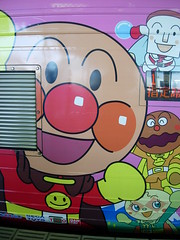
Maia is saying more and more words and short sentences now, but among her very first words was "Anpanman."
Bean Paste Bread Man!
Not unlike Elmo in the US, Anpanman is a ubiquitous (and sometimes LARGE) character with mysterious appeal to very small children, whether they have seen the show or not.
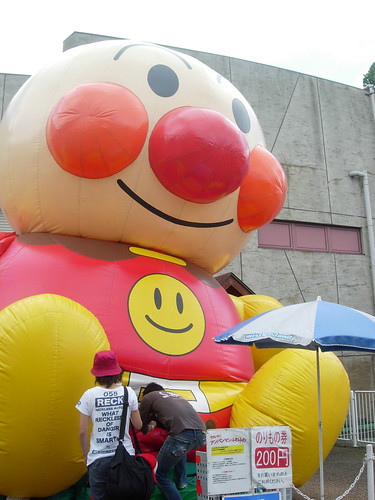
At Hirakata Amusement Park
So what is anpan?
"An" is an ingredient in most Japanese sweets, a paste made from adzuki beans and a lot of sugar. "Pan" is from the Portuguese for bread. The original was supposedly created in the late 1860s in Tokyo in an attempt to make bread more appealing to Japanese tastes. Apparently, the key change was not putting an paste into the bread, but rather using sakadane, usually used in the making of rice sake, as the leavening for the bread. Thus was born
Anpan I have eaten anpan at the shop most closely connected with its origins -
Kimuraya. Their anpan really is yummy. A friend 20 years my senior pointed out that the price has stayed close to 100 yen per bun for a long time (a bit more than a dollar) but the buns have gotten smaller and smaller.
In the animated show and related books and comics, various carbohydrate characters and bacteria battle it out. Anpanman's motto is "Love, Justice, Bravery" and indeed he is brave and loved by all. Some of his good friends are Melonpannachan (Melon Bread Girl), Karepanman (Curry Bread Man - hot-tempered but good), and Kuriimupanda (Cream Bread).
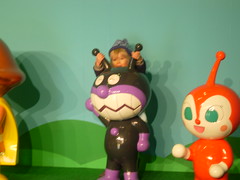
Baikinman
Our antagonist is Baikinman (Bacteria Man) who, along with his henchmen like Kabirunrun (mold guys - especially popular right now during the humid early summer), try to rot food and kids' teeth. Among the slew of tie in products are, of course, toothpaste and antibacterial ointment. There are over 1200 characters so I won't go into too much detail. But along with the main groups of bacteria and fusion bread products are some rice based characters and noodle based characters. They are generally good people, but sometimes have friction with the other starch groups. I am not clear on the potato side of things, but maybe if I buy the encyclopedia it will tell all. There is also "Akachan Man" (Baby Man), whom Maia is checking out here.
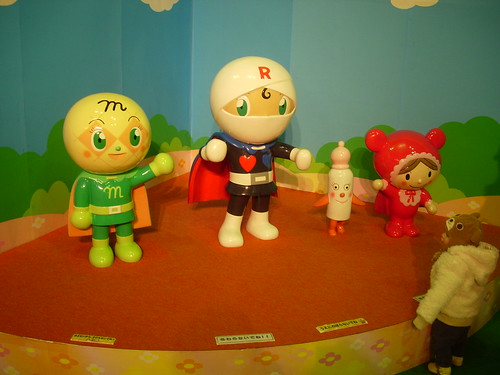
Melon Bread Girl, Roll Bread Man, Baby Man (and her sidekick bottle)
Along with the usefulness for public health (there was a lot of talk at schools about Baikinman during the Swine Flu outbreak), I expect a great appeal of Anpanman is the way it taps into one of the master narratives of Japanese identity - adaptation of the foreign to the Japanese context, from the reworking of Chinese characters to the Japanese grammar to western philosophy to food. To have rice battling it out with bread, the usual dichotomy, would be too obvious. A hybrid bread product is the perfect good guy and easy to have affection for.
An interesting aspect of the show that I don't think would go over so well in an American kids show is when characters eat each other. It's kind of scary when people eat out of the donburi bowl heads of some rice characters.
And of course bread goes stale, so Anpanman has to be rebaked on a regular basis. So as not to go to waste, he pulls chunks off his head an feeds them to his friends!
Anpanman is the creation of Yanase Takase (1919- ) of Kochi Prefecture in Shikoku. Supposedly he had dreams about anpan while fighting as a soldier in WWII. Last year was a big year for Anpanman since Yanase began writing the stories in 1968 and the television show Sore Ike, Anpanman came on the air in 1988.
In March, during a week off at my job we went on a family trip to Shikoku island. Because of the Yanase connection Japan Railways runs a number of Anpanman decorated trains for the express trains on the island. If there is space, you can even reserve seats in the Anpanman car, and we did this for one portion of our travels. Maia kept pointing at the ceiling and saying "anmanman," and this is how we knew that she could say this word. Some young women were riding the Anpanman train and taking photos on their cell phones. I thought maybe going on their graduation trips down memory lane.

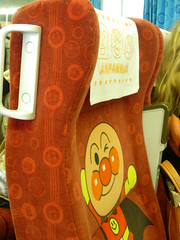

We skipped the A
npanman Museum near Kochi since it was inconvenient to get to with two small kids, but our bean jam friend was ubiquitous anyway.
Months later, Maia is still an Anpanman (and anpan) crazy, while Sam is making what seems to be a typical Japanese four year old's shift to hero shows like Kamen Rider and Shinkenger. He's never liked anything with an in it, but he will eat curry bread and is really hooked on Anpanman furikake. These are packets of flavoring for rice made of dried seaweed, sesame, fish, and vegetables. Two bowls of rice and two packets of that and he's all set for breakfast. They are pretty salty but apparently one packet has the calcium of 50 ml of milk. And he still is a sucker for Baikinman, who is a dirty but lovable anti-hero. The stories make something positive of his perseverance in trying to do in Anpanman and win the heart of Dokinchan who only has eyes for Shokupan Man (White Bread Man).
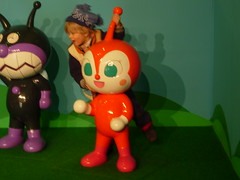
Dokinchan
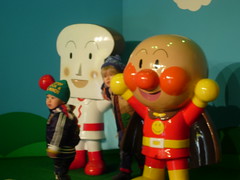
White Bread Man

